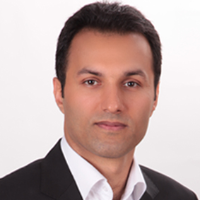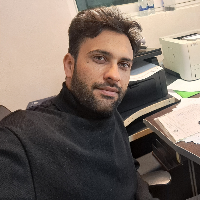Identifying potential areas for infill development using Remote Sensing: Ahvaz metropolis
- When infill occurs in a scattered pad area, it can be said that an unused, inefficient space is formed in the city.
- Of the 18,650-hectare legal area of the city of Ahvaz, more than 6,726 hectares has the possibility of infill development.
- Infill development with a suitable design can be a new type of development with a mixed residential structure and residents with different income levels.
In the country of Iran, while the growth and development patterns of towns were determined by local, endogenous parameters, there was some balance between life and the growth of urban economy. As exogenous factors began to play a role, however, some cities grew extremely and irregularly. The city of Ahvaz has undergone extensive physical-spatial changes due to the increase in population, the development of oil industries, the centrality of the province, the establishment of urban services, and the attraction of the residents of the cities and villages of the province in the past decades. This caused the uneven expansion of the city and the emergence of the phenomenon of dispersion therein. The physical parameters that trigger development in Ahvaz include industrial towns, military lands, the airport complex and its facilities, the academic functions of the city, its role as the main communication pathway, the market line to the east of the river, and the integration of suburban areas. These factors have caused many domestic capacities and potentials to remain unused, such as distressed and less developed or undeveloped lands in the city. Therefore, according to the current conditions in Ahvaz, it is a necessity to know about the areas and regions that are prone to infill development, in order to present plans to prevent the phenomenon of dispersion and realization of infill development.
To describe the notion of infill development, a large number of definitions have been proposed. The most common cause in the world is people’s residence in less wild areas of the city. Given that civilization has often happened in developing countries, and that many of the urban districts in these countries have undergone enormous growth that could be efficient in regard to the key principles of development, a three-dimensional strategy could be adopted for the development of a vast area, involving:1- new construction on a land that has not been developed, or, at least, cultivated, 2- physical rehabilitation of the current unusable buildings, and 3- compatibility with the forms and functions of these buildings.
The data used in this research includes Landsat and IRS satellite images, which were processed in the PCI Geomatica environment. The first stage of pre-processing (geometric correction) in this research includes integration of the coordinates of the prepared images. For this purpose, 25 control points were used. In order to better distinguish body spaces from shadows, the histogram equalization operation was also performed on the corresponding images. Then, the distressed fabric map was extracted using the WS model. MLC classification was applied to the images in order to generate and present a map of empty and barren lands in Ahvaz. For this purpose, different bands of two types of data were merged (fused) with image-merging operations to obtain the best combination of bands for classification.
The statistical investigations showed that of the total 18,650-hectare area of Ahvaz, 958.2 hectares was identified as distressed fabric, which makes up 5.13% of the city. The identified areas mostly correspond to the central parts of the city (the border between Salman Farsi and Taleghani Streets) and the old fabric around the Ali Mahziar Shrine. Moreover, in almost all the eight districts of the city, more or less scattered parts were identified as distressed fabric.
The results of the research showed that of the 18650-hectare legal area of Ahvaz, more than 6726 hectares (including the identified barren areas and distressed fabric) have the potentials for infill development. This value represents 36.2% of the city’s area, which is a relatively large ratio. Furthermore, over the entire area prone to infill development in Ahvaz, including distressed fabric and barren lands, the largest area concerns barren lands, with more than 5768 hectares, and the lowest values pertain to parts of the distressed fabric, with more than 958 hectares, representing 85.7% and 14.3%, respectively, of the entire area studied as prone to infill development. The results concerning the distribution of distressed fabric as identified in this research show that Municipal Districts One and Seven exhibit the largest values, with 3197360 and 3231110 square meters, representing 33.36% and 33.75% of the total distressed fabric of Ahvaz, respectively, and District Five has the smallest values, with 5850 square meters, making up 0.06%. These statistics are highly consistent with the field data, because Districts Seven and One of Ahvaz are considered as the old parts of the city and mainly contain the historic fabric. On the other hand, District Two, with a little more than 1720 hectares, and District One, with about 80 hectares, representing 28.5% and 0.3%, respectively, are known as the most and least severely barren and empty lands. The data in this section seem logical because District One (Old Ahvaz) is considered as part of the historic fabric and the primary, central core of Ahvaz, so the least severely abandoned, barren, and empty land occurs in this area.
- حق عضویت دریافتی صرف حمایت از نشریات عضو و نگهداری، تکمیل و توسعه مگیران میشود.
- پرداخت حق اشتراک و دانلود مقالات اجازه بازنشر آن در سایر رسانههای چاپی و دیجیتال را به کاربر نمیدهد.




